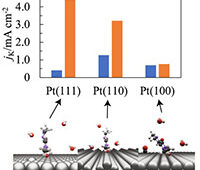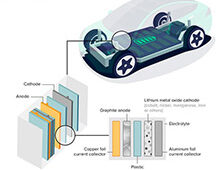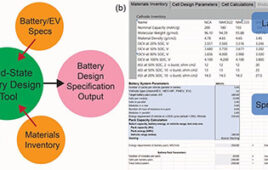 Researchers at the Univ. of Houston have reported developing an efficient conductive electron-transporting polymer, a long-missing puzzle piece that will allow ultrafast battery applications.
Researchers at the Univ. of Houston have reported developing an efficient conductive electron-transporting polymer, a long-missing puzzle piece that will allow ultrafast battery applications.
The discovery relies upon a “conjugated redox polymer” design with a naphthalene-bithiophene polymer, which has traditionally been used for applications including transistors and solar cells. With the use of lithium ions as dopant, researchers found it offered significant electronic conductivity and remained stable and reversible through thousands of cycles of charging and discharging energy.
The breakthrough, described in the Journal of the American Chemical Society, addresses a decades-long challenge for electron-transport conducting polymers, said Yan Yao, assistant professor of electrical and computer engineering at the UH Cullen College of Engineering and lead author of the paper.
Researchers have long recognized the promise of functional organic polymers, but until now have not been successful in developing an efficient electron-transport conducting polymer to pair with the established hole-transporting polymers. The lithium-doped naphthalene-bithiophene polymer proved both to exhibit significant electronic conductivity and to be stable through 3,000 cycles of charging and discharging energy, Yao said.
The discovery could lead to a cheaper alternative to traditional inorganic-based energy devices, including lithium batteries. Ultimately, Yao said, it could translate into less expensive consumer devices and even less expensive electric cars.
Yao’s research group focuses on green and sustainable organic materials for energy generation and storage. He is also a principal investigator for the Texas Center for Superconductivity at UH.
Yanliang Liang, a research associate at UH and first author on the paper, said researchers aren’t trying to compete directly with conventional lithium-ion batteries. “We are trying to demonstrate a new direction,” he said.
Liang said conventional inorganic metal-based batteries and energy storage devices are expensive partly because the materials used to make them, including cobalt and silicon-based compounds, require huge energy expenditures to process. Organic polymers can be processed at relatively low temperatures, lowering the cost.
They also produce less carbon dioxide, he said, adding to their environmental advantage. And while conventional materials are finite, organic polymers could potentially be synthesized from biomass.
“Organic π-conjugated polymers are emerging as a materials class for energy-related applications, enabling a path to a more sustainable energy landscape without the need of energy-intensive, expensive and sometimes toxic metal-based compounds,” the researchers wrote, concluding that “a model polymer, P(NDI2OD-T2), was stably and reversibly n-doped to a high doping level of 2.0, a significant progress for electron-transporting π-conjugated polymers. … With rational molecular design, π-conjugated redox polymers will establish new design space in polymer chemistry and see wide-spread applications, especially in energy-related ones such as batteries, supercapacitors and thermoelectrics.”
The basic polymer used in the work was discovered in 2009; Yao said it was provided by members of the research team from Polyera Corporation, a technology company based in Illinois. Although naphthalene-bithiophene has been used for transistors and other applications since its discovery, this is the first time it has been converted for use in energy storage.
That was done through the addition of lithium and raised the polymer’s doping level from a previously reported 0.1 to 2.0.
The results are record-setting. The polymer exhibits the fastest charge-discharge performance for an organic material under practical measurement conditions, allowing a battery to be 80% charged within 6 seconds and fully charged in another 18 sec, Liang said.
Conventional inorganic batteries still are capable of holding more energy than the organic battery, and Yao said work will continue to improve the storage capacity of the material. His group also will continue to do basic scientific research on the polymer to learn more about it, he said.
Source: Univ. of Houston
ENTRIES OPEN:
Establish your company as a technology leader. For 50 years, the R&D 100 Awards, widely recognized as the “Oscars of Invention,” have showcased products of technological significance. Learn more.




